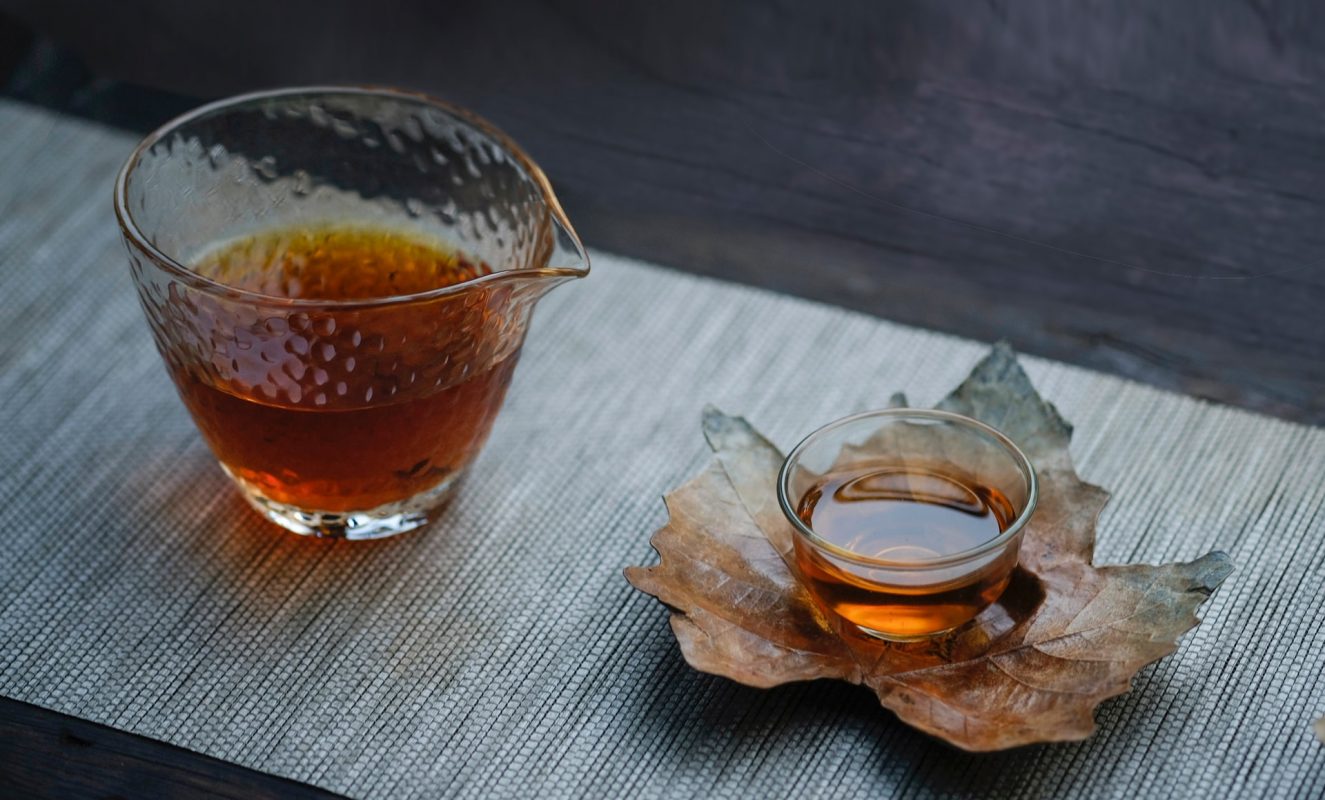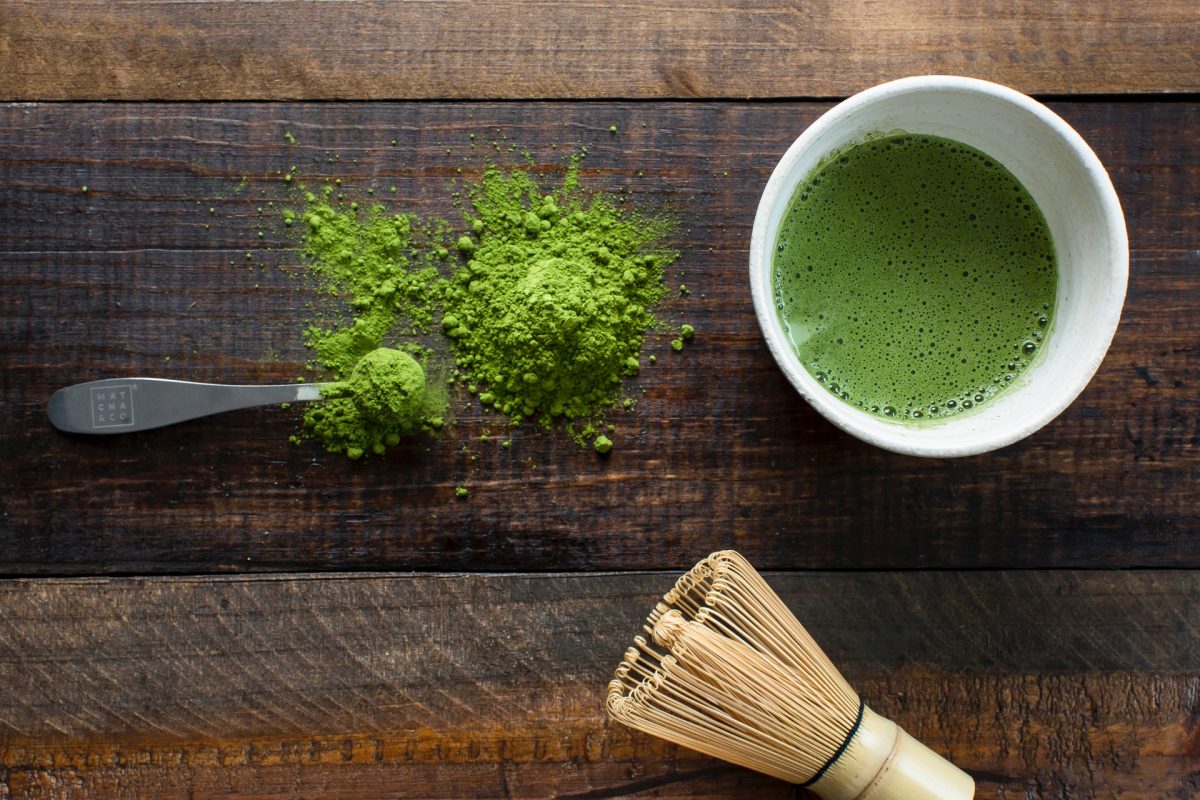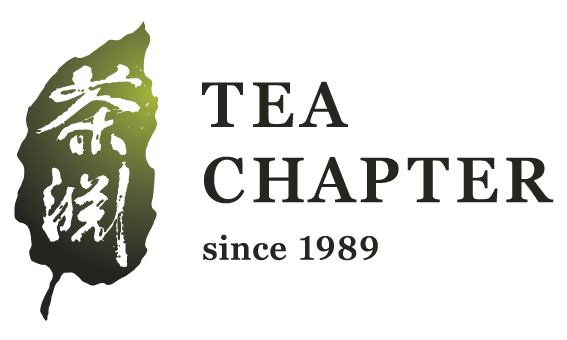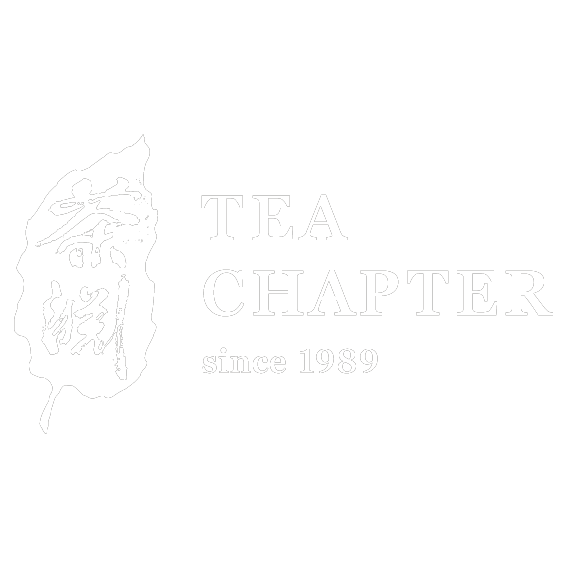Tea Facts
Health Benefits of Tea 茶的功效
According to ancient records, tea was mainly used for medicinal purposes before the Qin and Han dynasties. As stated in Shennong’s Materia Medica records: “Tea is bitter, drinking it enhances one’s cognitive ability, less tired, more energetic, and improves eyesight.” After the Wei and Jin Dynasties, tea gradually became widely regarded as a beverage, rather than something of medicinal purposes. However, people did not forget the medicinal functions of tea. In ancient China, tea was featured in Buddhism and Taoism’s way of health preservation, leading to the tea myths and legends that were passed down through the ages. Today, the health benefits of tea have been proven by modern science, and people from all around the world have also begun to acknowledge the health benefits of tea.
To understand the effects of tea, you must first understand the ingredients of the tea. Different tea preparation methods will affect the content of the following ingredients. This is very helpful for choosing the right tea for yourself, and also to know when to drink what kind of tea.
Ingredients in tea
1. Protein: an essential nutrient for the human body
2. Amino acids: regulate fat metabolism
3. Caffeine: reduces fatigue, diuretic and promotes blood circulation.
4. Tea polyphenols (catechins, flavonoids, anthocyanins, phenolic acids): lowering blood lipids, anti-inflammatory, anti-radiation, lowering cholesterol, and preventing arteriosclerosis.
5. Sugars: supplement energy
6. Vitamins: protect eyesight, anti-scurvy, anti-oxidation, anti-aging
7. Lipid: Regulate the osmotic pressure of human cells
8. Minerals: enhance immunity, contain fluorine to protect teeth.
Summary of the health benefits of tea
1. Diuretic
2. Protects your teeth
3. Anti-inflammatory
4. Inhibit cardiovascular and cerebrovascular diseases
5. Lowers blood pressure, blood lipids, lower blood sugar
6. Regulates skin vitality
7. Improves eyesight
8. Relieves heat and thirst
9. Prevents cancer and protects the liver

Amino acid:
The decomposition products of theanine in the human body can promote the immune response of T lymphocytes to the invasion of external pathogenic microorganisms, and can also promote the secretion of interferon. Interferon is a protein that has a broad-spectrum antiviral effect in the human body. Therefore, another effect of tea is to prevent cancer.
Alkaloids:
The alkaloids of tea are mainly coffee. Its main function is similar to drinking coffee, reduces fatigue, improves cardiovascular health and induces diuresis.
Tea Polyphenols:
Also known as vitamin polyphenols, is a kind of fused-ring aromatic hydrocarbons. It is the general term for polyphenols in tea, including flavanols, anthocyanins, flavonoids, flavonols and phenolic acids, etc. Among them, flavanols (catechins) are the most important, accounting for about 70% of the total amount of tea polyphenols. Tea polyphenols, also known as tea tannins, are one of the main ingredients that form the colour and fragrance of tea, as well as one of the main ingredients in tea that have health functions, and have a protective effect on the liver.
Tea polyphenols can be combined with bacterial proteins, leading to the bacterial proteins coagulating and eventually destroyed to achieve anti-inflammatory and anti-bacterial effects. At the same time, it enhances gastrointestinal contraction and peristalsis, promotes digestion, and effectively discharges waste and toxic substances that have accumulated in the digestive tract. It also promotes the growth of intestinal flora. Tea polyphenols can aid with regulation of blood flow, reduces the permeability of capillaries, and achieve the effect of lowering blood sugar.
Tea pigment:
Tea pigment is a water-soluble, small molecule, phenolic oxidative polymer produced by oxidative polymerization of tea polyphenols extracted from tea. It is a medicinal substance with extremely high biological activity, which can aid in removing atheroma from arteries. The tea pigment can also prevent cholesterol-like substances from depositing on the arteries and prevent the occurrence of arteriosclerosis.
Catechin:
Catechin is the most important kind of tea polyphenols, accounting for about 75% to 80% of the content of tea polyphenols. It is also one of the sources of the bitter taste of tea. It has antioxidant properties, scavenges free radicals and reduces melanin. After tea was introduced into the research field of modern science, catechins have always been the focus of research.
Vitamins and minerals:
Regulate skin vitality. Rich vitamin C enhances the detoxification function of the liver. Fluorine is an important element in inhibiting dental caries and is often added to toothpaste to protect the enamel of teeth from erosion. Enhance tooth resistance to acid. You can rinse your mouth with tea and brush your teeth. Vitamin B and C in tea can be obtained by drinking tea, as well as fat-soluble vitamin A, whose content is higher than the same amount of carrots, which can be obtained by eating tea, through various tea infused recipes (e.g. shrimps stir-fried with Dragon Well tea). There are more than forty kinds of minerals in tea, with potassium being the highest in content. It is of great significance for maintaining the balance of osmotic pressure and blood, as well as the metabolism of human cells.
Carbohydrate amino acids:
The acids interact with saliva to relieve fever and produce fluid. Lipopolysaccharide can protect the human body’s hematopoietic function and reduce radiation damage to the human body.
Green tea:
Tannin, vitamin C, vitamin E, and tea polyphenols have the effect of skin aging and reducing pigmentation. Green tea also has a very good soothing effect. After sun exposure, use a cotton pad to soak iced green tea on the skin to cool down and maintain skin health. External application of green tea can reduce oil secretion and balance the skin’s water and oil. It is rich in amino acids, tea polyphenols, catechins and a variety of minerals and inorganic elements. Among them, potassium, magnesium, and iron are high in content, which has a good inhibitory effect on hypertension, diabetes, and cancer. Generally speaking, the content of vitamins, amino acids, tea polyphenols, and caffeine are the highest in green tea and white tea. The higher the degree of oxidation, the lower caffeine level. Contrary to caffeine, the higher the oxidation degree, the higher mineral content would be present in the tea.
Pu’er:
Pu’ers that are aged has a lot of oligomers, which can reduce the enzymatic destruction of cell elastic tissue and collagen. The oligomer also has a turbid purification effect and restores cell repair ability. A doctoral dissertation published that Pu’er tea has the effects of preventing obesity, reducing fat and losing weight, and the effect of ripe Pu’er[Chinese Black tea / Dark tea] is better than raw Pu’er. Because Pu’er produces special ingredients that break down fat during post-oxidation, it has been loved by meat-eating herders throughout history.
White tea:
The process is simple and the beneficial ingredients are retained. The tea polyphenols are three times as much as other teas. Oxygen free radicals are the culprit of ageing, and tea polyphenols are oxygen free radical cleansers. Based on the excellent anti-ageing effects of white tea, white tea is also called woman tea. In recent years, major brands have also rushed to add white tea extract to their skincare products.
Black tea[Known as red tea in mandarin]:
After oxidation and baking, tea polyphenols undergo an enzymatic oxidation reaction under the action of oxidase, and the content decreases. The irritation to the stomach is reduced, and the oxidation products produced promote digestion. Compared with green tea, black tea is therefore more suitable for regulating the stomach. Black tea pigments are a class of tea polyphenol oxidation products with strong biological activity. Modern medicine has found that tea pigments (the main ingredients are theaflavins (TFs) and thearubicins (TRSI)) not only have antibacterial, antiviral, and anti-cardiovascular, anti-cancer and cerebrovascular diseases effects, but also prevents atherosclerosis, hyperlipidemia, Hypertension, lipid metabolism disorders, cerebral infarction, platelet aggregation and contains antioxidants. Obtaining tea pigments with higher theaflavin content has become an important subject in tea science, food and medicinal research.
Oolong tea:
The efficacy is between green tea and black tea, depending on the degree of oxidation of the oolong tea. Lightly fermented oolong tea is similar to green tea, and vice versa.
Tea drunk:
Drinking alcohol will make you drunk, and drinking tea will also make you drunk. As the saying goes, tea is not intoxicating and people get drunk themselves. This kind of tea drunkenness is a kind of spiritual intoxication, but the drunken tea we are talking about today is a physiological phenomenon that can cause harm to the body. People who have finished drinking strong tea or a large amount of tea may have experienced such symptoms, such as allergies, insomnia, tremor of hands and feet, dizziness, tinnitus, weakness of the limbs, vomiting, and foaming at the corners in severe cases.
Taboo for drinking tea:
Don’t drink overnight tea: If the general tea leaves are steeped for too long, they will taste bitter and hard to eat because of the excessive content of tannins and caffeine. Tannin will coagulate protein and combine with gastric acid to deposit in the stomach, affecting the absorption of iron and easily harming the gastric mucosa. Overnight tea is generally stored at room temperature, and it is easy to breed microorganisms.
People who are not suitable for tea:
1. There are already patients with gastritis, and the tea is somewhat irritating, which is also the reason why it is not advisable to drink tea on an empty stomach.
2. People with low blood pressure
3. Children, children growing up, drinking more tea will affect the absorption of iron and iron. It is not advisable to drink strongly brewed tea or drink tea excessively.

从古籍记载来看,秦汉之前茶基本以药用为主,神农本草经记载:“茶叶苦,饮之使人益思,少卧,轻身,明目。”魏晋以后,茶的功能逐渐转移到饮料上。但人们没有淡忘茶的药用功能。在古代中国,茶也被注重养生的佛教道教加以运用,并产生了茶的神话传说。时至今日,茶的药理作用被现代科学所证明,不仅华人视茶为养生之物,其他种族也开始了解推崇茶。
想了解茶的功效,要先了解茶的成分,不同茶的制作方式会影响以下成分的含量。这对选择合适自己的茶非常有帮助,也进而懂得什么时候合适喝什么样的茶。
成分表
- 蛋白质: 人体所需营养物质
- 氨基酸:调节脂肪代谢
- 咖啡因:提神利尿,促进血液循环,
- 茶多酚 (儿茶素,黄酮素,花青素,酚酸): 降血脂,消炎,防辐射,降低胆固醇,防止动脉硬化。
- 糖类: 补充能量
- 维生素:保护视力,抗坏血病,抗氧化,抗衰老
- 类脂质:调节人细胞渗透压
- 矿物质:增强免疫,含有氟元素保护牙齿。
功效总结
- 利尿通便
- 保护牙齿
- 消炎杀菌
- 抑制心脑血管疾病
- 降血压,降血脂,降血糖
- 美容护肤
- 清心明目
- 消暑解渴
- 防癌护肝

氨基酸:
茶氨酸在人体内的分解产物能够促进T淋巴细胞对外界病原微生物的侵袭产生免疫反应,同时还能促进干扰素的分泌。干扰素是一种蛋白质, 在人体内具有广谱的抗病毒作用。因而,茶叶的另一个功效就是防癌抗癌。
生物碱:
茶的生物碱以咖啡因为主。其主要作用和喝咖啡类似,提神,强心与利尿。
茶多酚(Tea Polyphenols):
又名维多酚,为一种稠环芳香烃,是茶叶中多酚类物质的总称,包括黄烷醇类、花色苷类、黄酮类、黄酮醇类和酚酸类等。其中以黄烷醇类物质(儿茶素)最为重要,含量约占茶多酚总量的70%左右。茶多酚又称茶单宁,是形成茶叶色香味的主要成份之一,也是茶叶中有保健功能的主要成份之一,对肝有保护作用。
茶多酚能与细菌蛋白结合,使细菌蛋白凝固死亡从而达到消炎,抑制细菌的作用。同时增强肠胃的收缩蠕动,促进消化,使淤积在消化道的废物和有毒物质有效排出。也是肠道有益菌群繁荣。茶多酚能保持微血管的正常韧性,节制微血管的渗透性,从而达到降血糖的功效。
茶色素:
是从茶叶中提取出的茶多酚经过氧化聚合反应生成的一种水溶性、小分子、酚性氧化聚合物,是一种具有极高生物活性的药用物质,可以清除动脉上硬化的粥样物质,也可防止胆固醇类物质沉积在动脉上,防止动脉硬化的发生。
儿茶素:
是茶多酚中最重要的一种,约占茶多酚含量的75%到80%,也是茶的苦涩味的来源之一,具有抗氧化性能,清除自由基,减少黑色素。在茶叶被引入现代科学的研究范畴之后,儿茶素一直是研究的焦点。给现代人的养生以惊喜。
维生素矿物质:
调节肌肤活力。 丰富的维生素C 使肝脏的解毒功能增强。氟元素是抑制龋齿的重要元素,经常被加入牙膏中,保护牙齿的珐琅质免遭侵蚀。增强牙齿抗酸能力。可以用茶漱口,刷牙。茶叶中的维生素B 和C 可以通过喝茶获得,还有脂溶性的维生素A,其含量高于等量的胡萝卜,可以通过以茶入食的方法获得,比如龙井虾仁。茶叶中的矿物质多达四十余种,钾的含量最高,它对于维持渗透压和血液的平衡,以及人体细胞的新陈代谢具有举足轻重的意义。
糖类氨基酸:
与唾液作用,解热生津。脂多糖能保护人体的造血功能,减轻辐射对人体的伤害。
绿茶:
单宁,维生素C,维生素E, 茶多酚,具有抗皮肤老化,减少色素沉淀的功效。绿茶还有很好的舒缓效果,晒后用化妆棉浸泡冰镇的绿茶敷在皮肤上,可以起到降温,镇定皮肤的功效,绿茶外敷,减少油脂分泌,令肌肤水油平衡。富含氨基酸茶多酚、儿茶素以及多种矿物质和无机元素。其中钾、镁、铁元素含量高,对高血压、糖尿病、癌症具有良好的抑制作用。一般而言,维生素,氨基酸,茶多酚,咖啡因的含量都是绿茶白茶最高,发酵程度越高,这些成分越低。矿物质相反,发酵度越高的茶相对较高。
普洱:
陈年普洱有大量低聚物,这些可以减少细胞弹性组织和胶原蛋白的酶破坏。低聚物还有拍浊净化效果,恢复细胞修复能力。有博士论文发表,普洱茶具有预防肥胖,降脂减肥的功效,熟普洱效果比生普洱更佳。缘于普洱在后发酵中产生了分解脂肪的特殊成分,在历史上,一直被多食肉的牧民所喜爱。
白茶:
工艺简单,保留了有益成分,茶多酚是其他茶叶三倍。氧自由基是引起衰老的元凶,茶多酚是氧自由基清洁剂。基于白茶优秀的抗衰老功效,白茶因此也被叫做女人茶。各大品牌近年来也争相把白茶提取物加入他们的护肤产品中。
红茶:
经过发酵烘制后,茶多酚在氧化酶作用下发生酶促氧化反应,含量减少。对胃部的刺激性减少,产生的氧化产物促进消化,相比绿茶,红茶因此更适合调理肠胃。红茶色素是一类茶多酚氧化产物 , 具有较强的生物活性。现代医学已发现茶色素 (主要成份为茶黄 素 (TFs) 和茶红素 (TRSI) ) 不仅具有抗菌、抗病毒、抗心脑血管疾病等作用 , 对动脉粥样硬化、高脂 血症、高血压、脂代谢紊乱、脑梗塞、血小板凝集等疾病均有较好的预防和治疗作用 , 还有抗氧化、抗癌作用。获取茶黄素含量较高的茶色素已成为茶学、食品和医药研究的重要课题。
乌龙茶:
功效介于绿茶和红茶之间,取决于乌龙茶的发酵氧化程度,轻发酵的乌龙茶功效接近绿茶,反之接近红茶。
茶醉:
喝酒会醉,喝茶也同样会醉。常言道,茶不醉人人自醉,这种茶醉是一种精神的陶醉,而我们今天所说的醉茶,却是能对身体造成危害的生理现象。喝完浓茶或大量茶的人可能有过这样的体验,出现过敏、失眠、手足颤抖、头昏耳鸣、四肢无力、想呕吐,严重时还会口角流沫等症状,这种情况正是醉茶。
喝茶禁忌:
不喝隔夜茶:一般的茶叶若是浸泡过久会因为单宁酸、咖啡因等物质含量过多,味道苦涩难入口。单宁酸会使蛋白质凝固,与胃酸结合沉淀在胃里,影响铁的吸收,容易伤害胃黏膜。隔夜茶一般在室温中存放,也容易滋生微生物细菌。
不适合喝茶的人群:
- 已经有胃炎患者,茶叶多少有刺激,也是空腹不宜喝茶的原因。
- 低血压人群
- 儿童,儿童在长身体,多喝茶会影响概以及铁的大量吸收。不宜喝浓茶,喝过量的茶。
REFERENCE:
https://zhuanlan.zhihu.com/p/138847759
https://zhuanlan.zhihu.com/p/73401115
http://www.eco.gov.cn/industry/tea/32294.html
http://gb.oversea.cnki.net/KCMS/detail/detail.aspx?filename=1013192247.nh&dbcode=CDFD&dbname=CDFDREF
https://zh.wikipedia.org/wiki/%E8%84%82%E5%A4%9A%E7%B3%96
http://nauxb.njau.edu.cn/Upload/PaperUpLoad/3b11fe1a-4ead-4035-9f68-c770419bfb27.pdf


